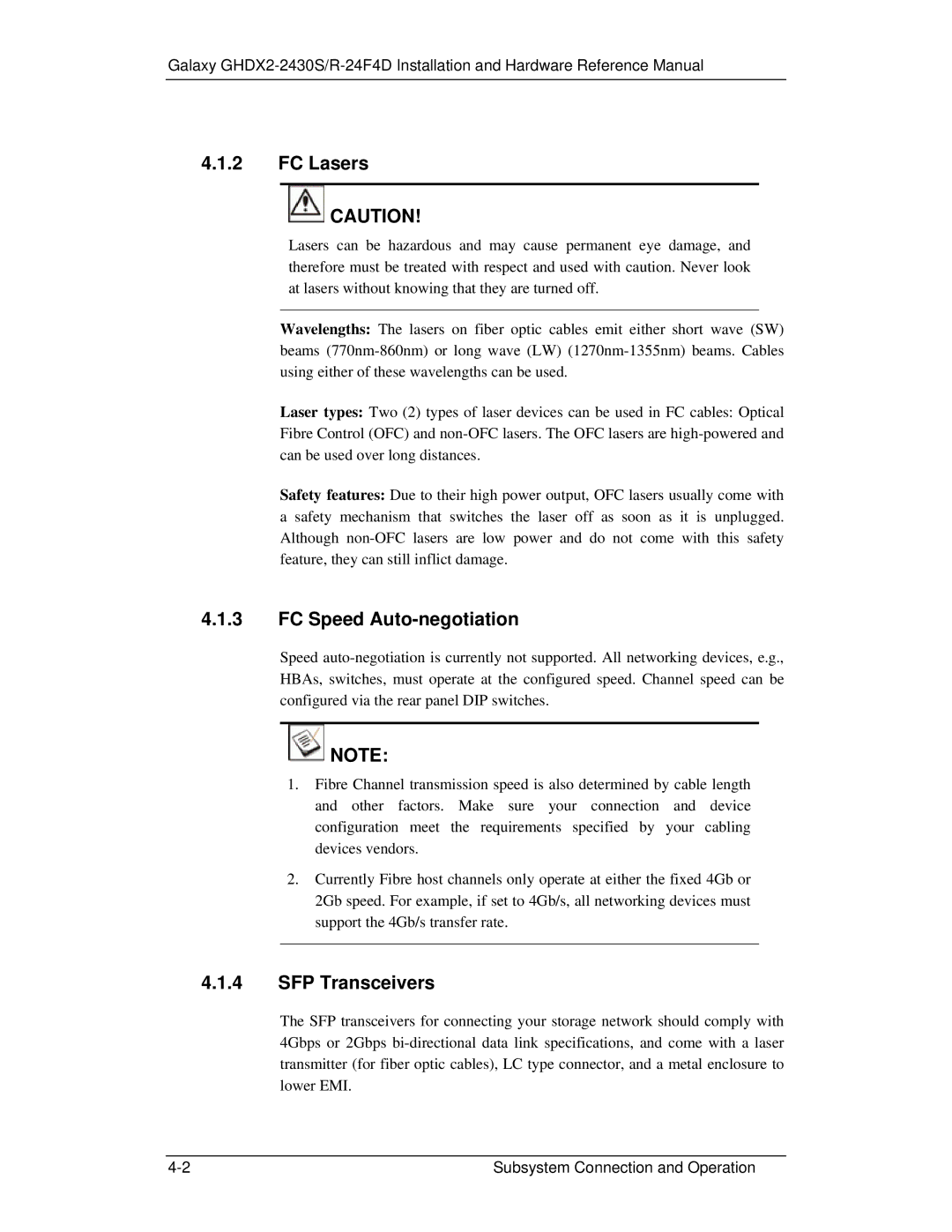
Galaxy
4.1.2FC Lasers
![]() CAUTION!
CAUTION!
Lasers can be hazardous and may cause permanent eye damage, and therefore must be treated with respect and used with caution. Never look at lasers without knowing that they are turned off.
Wavelengths: The lasers on fiber optic cables emit either short wave (SW) beams
Laser types: Two (2) types of laser devices can be used in FC cables: Optical Fibre Control (OFC) and
Safety features: Due to their high power output, OFC lasers usually come with a safety mechanism that switches the laser off as soon as it is unplugged. Although
4.1.3FC Speed Auto-negotiation
Speed
![]() NOTE:
NOTE:
1.Fibre Channel transmission speed is also determined by cable length and other factors. Make sure your connection and device configuration meet the requirements specified by your cabling devices vendors.
2.Currently Fibre host channels only operate at either the fixed 4Gb or 2Gb speed. For example, if set to 4Gb/s, all networking devices must support the 4Gb/s transfer rate.
4.1.4SFP Transceivers
The SFP transceivers for connecting your storage network should comply with 4Gbps or 2Gbps
Subsystem Connection and Operation |
